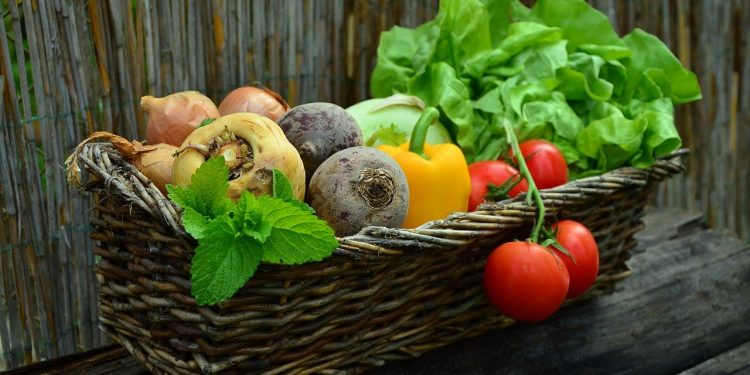Want to Reduce Your Exposure to Pesticides? Buy Danish!

Danish-produced fruit and vegetables contain fewer pesticide residues than imported ones
By Louise Chamberlain Picture: Pixabay stock picture
Denmark’s commitment to food safety and environmental sustainability has long been a hallmark of its agricultural and consumer practices.
Central to this commitment is the rigorous monitoring and regulation of pesticide residues in fruits and vegetables. A recent report by the DTU National Food Institute found that Danish-produced fruits and vegetables have lower pesticide residues than imported produce.
The Role of Pesticides
Pesticides are liberally used in conventional agriculture to protect crops from pests, weeds, and fungal infections, leading to increased yields. However, their residues in food products are a significant concern for consumers and regulatory bodies alike.
The Danish Veterinary and Food Administration, in collaboration with the National Food Institute (Fødevareinstituttet) at the Technical University of Denmark (DTU), conducts annual assessments to monitor these residues.
Danish vs. Imported Produce
A notable trend emerging from recent studies is the disparity in pesticide residues between Danish-produced and imported fruits and vegetables.
In 2023, 68% of Danish conventionally grown fruit samples contained pesticide residues. This figure contrasts with 82% for fruits sourced from other EU countries and 81% for those imported from outside the EU.
Vegetables exhibited an even more pronounced difference. Only 19% of Danish vegetable samples had detectable pesticide residues, compared to 58% for EU imports and 62% for non-EU imports.
Particularly striking is the case of tomatoes: Danish tomatoes were found to be free from pesticide residues, whereas 76% of imported tomatoes contained them.
Furthermore, the presence of multiple pesticide residues in a single sample was significantly higher in foreign produce. Over half (52%) of the foreign conventionally grown samples contained more than one pesticide, while this was the case in only 12% of Danish samples.
Organic Produce: A Cleaner Alternative?
Organic farming practices, which largely prohibit the use of synthetic pesticides, offer consumers an alternative with potentially lower pesticide exposure.
In 2023, pesticide residues were detected in just 2.3% of organic samples. It’s important to note that the occasional presence of residues in organic products doesn’t necessarily indicate a breach of organic standards.
Factors such as drift from neighbouring conventional farms can lead to minimal pesticide traces. Nonetheless, choosing organic foods remains a reliable strategy for those aiming to minimise pesticide intake.
Health Implications and Consumer Concerns
While the majority of pesticide residues found in Danish produce are within legal safety limits, consumer apprehension persists, particularly regarding the cumulative effects of multiple chemical exposures—the so-called “cocktail effect.”
Even if a single fruit or vegetable has safe levels of pesticides, eating multiple foods with different pesticide residues could lead to higher exposure.
Observational studies have suggested potential health benefits associated with organic diets, including reduced risks of obesity, type 2 diabetes, and certain cancers.
These findings underscore the importance of continued research into the long-term health impacts of dietary pesticide exposure.
Supermarket Initiatives: Raising the Bar
Responding to growing consumer demand for safer food options, several Danish supermarket chains have implemented stricter policies on pesticide residues. Lidl, for instance, requires pesticide residues in their produce to be 66% below the legal limits. Coop mandates a 50% reduction. Additionally, these retailers limit the number of different pesticides used per item to a maximum of five.
These proactive measures reflect a broader commitment within the Danish retail sector to prioritise consumer health and environmental sustainability, often exceeding the baseline requirements set by EU regulations.
Practical Tips for Consumers
Proper washing: For individuals seeking to reduce pesticide exposure further, practical steps can be taken during food preparation. Soaking in a solution made from a tablespoon of bicarbonate of soda dissolved in a bowl of water for five minutes and then rinsing thoroughly can effectively remove surface residues.
Buy Organic: If you can afford it, eating organic produce reduces your exposure to pesticides but it also has other health benefits. Organic fruit and vegetables contain higher levels of nutrients than conventionally grown crops.
Denmark’s vigilant monitoring and regulation of pesticide residues in fruits and vegetables demonstrate a robust commitment to public health and environmental stewardship.
While the presence of pesticide residues remains a concern, particularly in imported produce, the high compliance rate with safety standards offers reassurance.
The growing consumer preference for organic products and the proactive policies adopted by Danish supermarkets further contribute to reducing pesticide exposure.
Louise Chamberlain is a certified health and nutrition coach providing tailored, sustainable solutions to enhance overall wellbeing.
www.louisechamberlain.com

